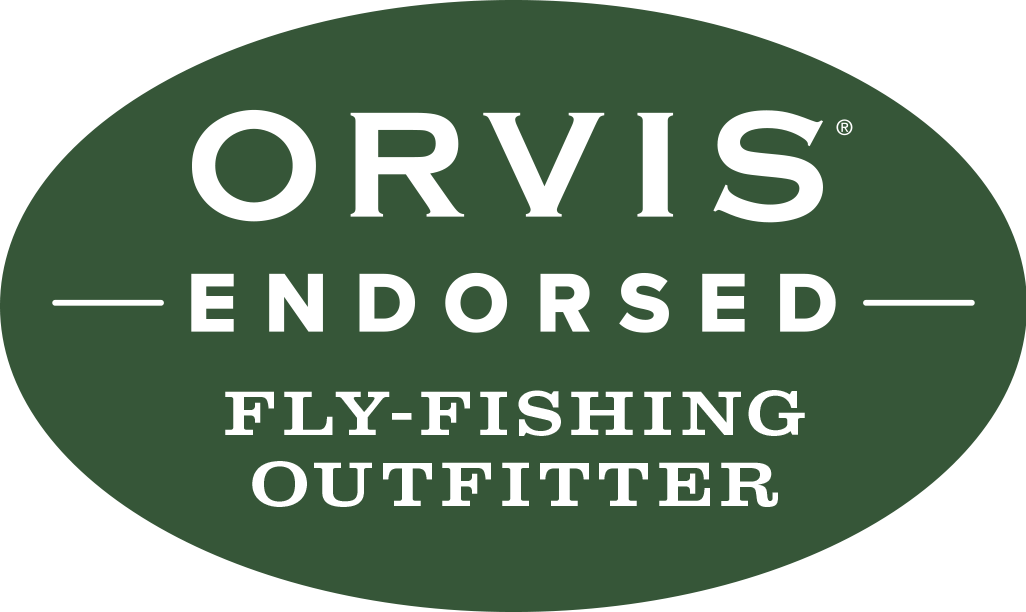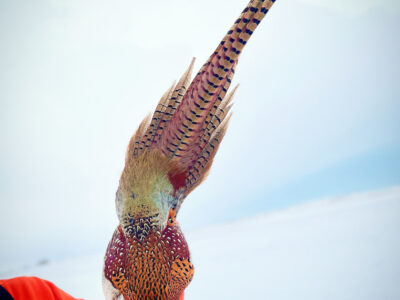Come October, my dogs and I are chasing wild roosters all over Montana. Not only do I enjoy pursuing these birds, but I also make use of every part of them. We have fine meals, the tail feathers adorn our Christmas tree for decoration, and of course, they make excellent flies. At the end of the season, I hand out tail feathers and capes to friends and family, so they can start tying and filling fly boxes with pheasant tail nymphs, one of the most effective patterns used today.
The pheasant tail nymph is named for the use of the fibers from the tail of a rooster pheasant as the main material for the body of the fly. The body is typically wrapped with copper wire or tinsel. Some tiers add beads, weight, and a bit of flash. From standard nymph rigs to dry-dropper setups, the pheasant tail nymph is versatile and effective on many western rivers. It can be fished in a variety of situations, from fast-moving riffles to stillwater lakes.

Materials needed:
- Hook: Size 12-18 nymph hook
- Thread: Brown or black 6/0 or 8/0 thread
- Tail: 6-8 pheasant tail fibers
- Ribbing: Copper wire
- Abdomen: Pheasant tail fibers
- Wing case: Pheasant tail fibers
- Thorax: Peacock herl
- Bead (optional): Copper or brass bead
Steps for tying the Pheasant tail Nymph:
- Start by sliding a bead onto the hook (if you are using one), and then secure the hook in your vise.
- Attach your thread to the hook shank just behind the bead and wrap it down the shank to the bend of the hook.
- Tie in 6-8 pheasant tail fibers at the bend of the hook to form the tail. The tail should be about the same length as the hook shank.
- Tie in a piece of copper wire at the base of the tail and wrap it down the shank to the bend.
- Tie in 4-6 pheasant tail fibers at the base of the tail and wrap the thread up the shank to just behind the bead.
- Take the pheasant tail fibers and wrap them forward to form the abdomen. Try to make the wraps as tight and close together as possible, and secure them with your thread.
- Take the copper wire and wrap it forward over the abdomen in evenly spaced wraps, making sure to catch each wrap with the thread to secure it.
- Tie in another 4-6 pheasant tail fibers just behind the bead to form the wing case. The fibers should be about the same length as the tail.
- Take the pheasant tail fibers and pull them over the top of the thorax to form the wing case. Secure them with your thread.
- Tie in 2-3 peacock herl fibers at the base of the wing case and wrap them forward to form the thorax. Try to make the wraps as tight and close together as possible, and secure them with your thread.
- Whip finish the thread wraps and trim it off.
- Trim the pheasant tail fibers and peacock herl to shape the fly and add a drop of head cement.
Your pheasant tail nymph is now complete!


 Fly Fishing From a Drift Boat
Fly Fishing From a Drift Boat
Thanks for the tips!